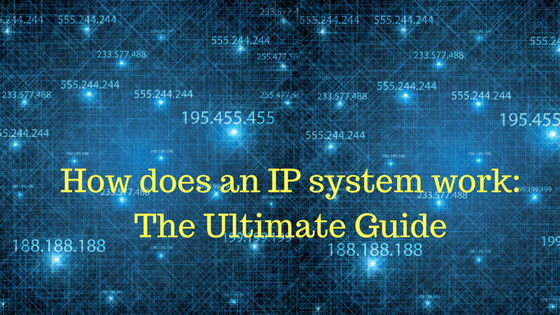Internet Protocol or IP as it is popularly known is an identifier that is provided to each computer or device. It has a lot of significance and all the devices connected to the TCP/IP network communicate with each other through the particular IP assigned. The version 4 of IP assigns a 32-bit number to a device whereas the IPv6 or the version 6, which is the latest one uses 128 bits for the IP address. The new version of the IP was created to address the issue of the depletion of the existing IP addresses in version 4. Ahead we will discuss how IP system work Also read VirtualBox vs VMWare comparison
On a global scale, the Internet Assigned Numbers Authority is the association that manages the IP. However, the end-user IP assignment is done by regional and local authorities such as Internet service providers. Let’s see how the whole IP system work in order to understand it in a better way.
Recommended: 192.168.1.1 Login Page, Username, Password and Wireless settings

Contents
How does an IP system work
Here we are going to share complete information about how does an IP system work for you. Keep read..
How are the IP addresses assigned?
For the end-user, the IP address to every particular device is assigned by the local service providers and network administrators. There are two major types of IP’s namely Static and Dynamic. The Static IPs are assigned manually by the network administrator whereas the dynamic IPs are automatically assigned. The dynamic IP addresses usually change every time the device is rebooted but the static ones stay the same until the network administrator manually changes it again. It is always preferred to let the IPs be dynamically assigned to avoid any kind of complications.
How does IP auto configuration work?
The way auto-configuration works in IPv4 and IPv6 is totally different. In IPv4, there is a particular kind of address block which is defined by RFC 3330 and it is used for link-local addressing. Whereas for IPv6, it is the same for static and dynamic addresses that receive the local link addresses automatically. It is certainly hassle-free and doesn’t cause any complications. However, the local link addresses are not routable and similar to private addresses. All of this allows for quick auto-configuration of the static as well as dynamic IPs on IPv4 and IPv6.
Conflict of IP addresses
The conflict of IP addresses is exactly what it sounds like. It happens when two local devices on the same wireless network have the same IP. This is when the addresses of both these devices conflict with each other. Once this happens, the device which is connected last will automatically stop the IP functionality of either that or both of the devices. Almost all the modern operating systems come with a feature where they notify the user of this situation and the user can take manual action. At times, conflicting IPs can also cause both of the devices to function very poorly under certain circumstances.
How does IP routing works?
When it comes to routing, there are different classes of operational characteristics. They are: unicast, multicast, anycast and broadcast addressing. All of them are unique in nature and perform differently. The unicast is the most common of them all and it can be availed in both, IPv4 and IPv6. In broadcast, the data is reached to multiple destinations as a copy. The multicast addressing ensures that the data is reached to a group of people who are interested in it. It works differently in IPv4 and IPv6.
These are some of the major concepts which all of us need to be aware of to know how IP systems work. It can surely be the ultimate guide for all those who are interested in knowing the basics of the IP system.
Some other related post
